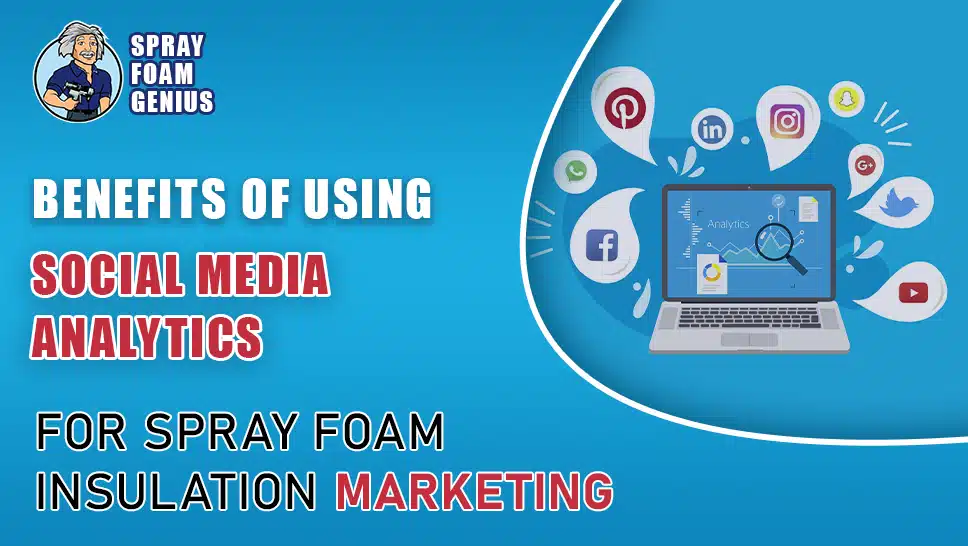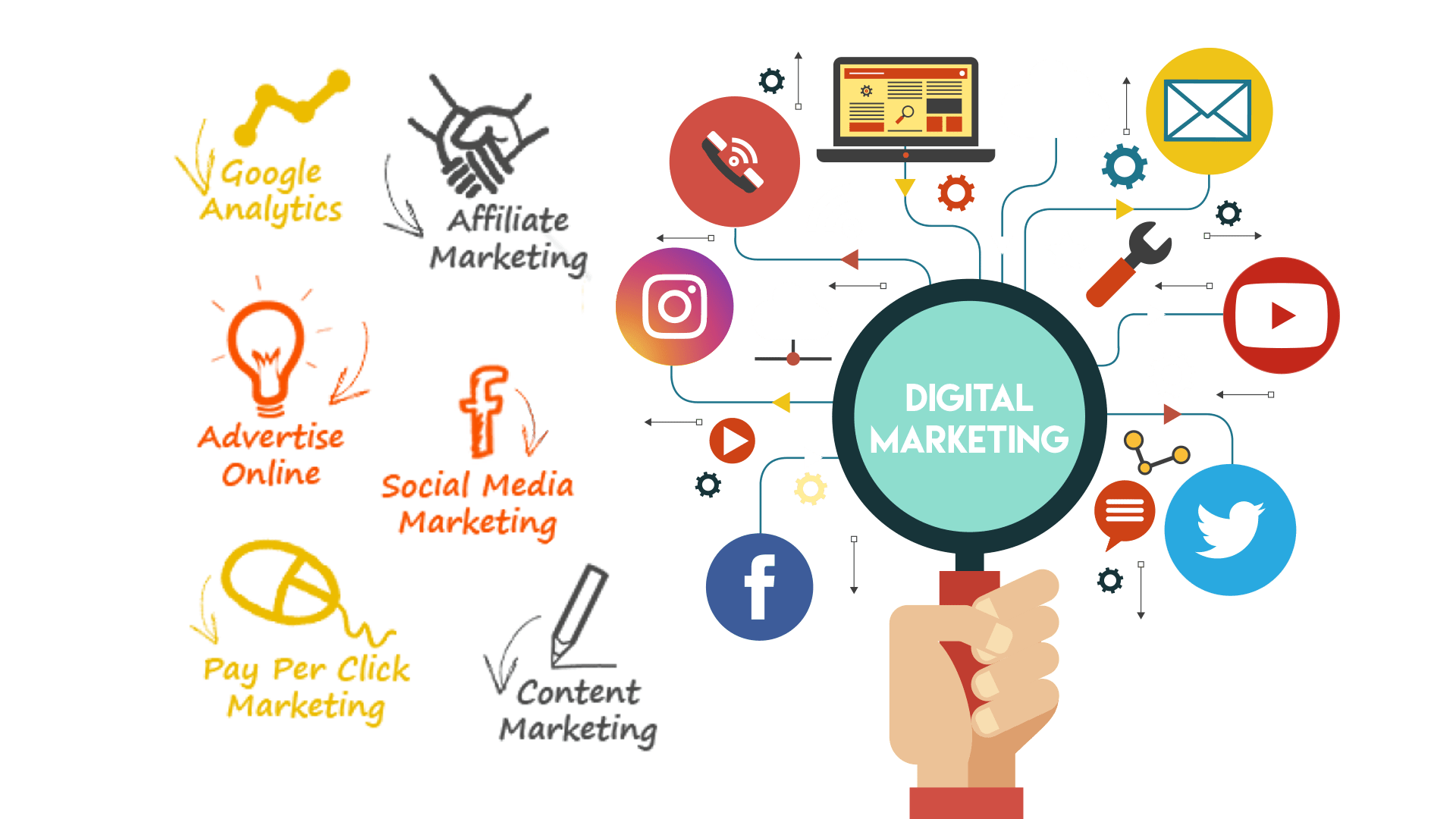
In the rapidly evolving world of digital marketing, social media has emerged as a vital tool for businesses across various industries. For spray foam insulation contractors, harnessing the power of social media analytics can significantly enhance marketing efforts, drive business growth, and improve overall marketing ROI. At Spray Foam Genius Marketing, we specialize in providing targeted SEO, Google My Business optimization, local SEO, website development, lead generation, social media marketing, and reputation management services tailored specifically for spray foam insulation contractors in the USA and Canada. This comprehensive guide will delve into the numerous benefits of using social media analytics for spray foam insulation marketing, demonstrating how these insights can transform your marketing strategy.
Understanding Social Media Analytics
Before diving into the benefits, it’s essential to understand what social media analytics entails. Social media analytics refers to the process of collecting and analyzing data from social media platforms to evaluate the performance of your social media campaigns. This data can include metrics such as engagement rates, reach, impressions, follower growth, and click-through rates.
Social media platforms like Facebook, Instagram, LinkedIn, and Twitter offer built-in analytics tools that provide valuable insights into your posts’ performance and audience behavior. Additionally, third-party tools such as Google Analytics, Hootsuite, and Sprout Social can offer more comprehensive analyses and cross-platform comparisons.
The Strategic Advantages of Social Media Analytics
1. Enhanced Targeting and Personalization
One of the most significant advantages of social media analytics is the ability to refine targeting and personalization. By analyzing the data on who engages with your content, what type of content performs best, and when your audience is most active, you can tailor your marketing efforts to better meet the needs and preferences of your target audience.
For spray foam insulation contractors, this means you can create highly relevant content that resonates with potential clients. For example, if your analytics reveal that posts showcasing successful insulation projects receive high engagement from homeowners in specific regions, you can focus your content and advertising efforts on those areas.
2. Improved Content Strategy
Social media analytics provides critical insights into which types of content generate the most engagement. By evaluating metrics such as likes, shares, comments, and click-through rates, you can identify the content themes and formats that work best for your audience.
For instance, if your analytics show that video content showcasing the benefits of spray foam insulation performs better than static images, you can adjust your content strategy to include more video content. This not only enhances engagement but also helps in positioning your business as a thought leader in the spray foam insulation industry.
3. Optimized Posting Times
Understanding when your audience is most active on social media is crucial for maximizing engagement. Social media analytics tools provide data on peak activity times for your audience, allowing you to schedule posts for optimal visibility.
By posting during high-engagement times, you increase the likelihood of your content being seen and interacted with. For spray foam insulation contractors, this means more visibility for your promotional posts, educational content, and special offers.
4. Data-Driven Decision Making
Making informed decisions is essential for any successful marketing strategy. Social media analytics offers valuable data that can guide your decision-making process. For example, if you notice a drop in engagement or reach, you can investigate potential causes and make necessary adjustments to your strategy.
Analytics also help in evaluating the success of your marketing campaigns. By tracking metrics such as return on investment (ROI), cost per lead, and conversion rates, you can determine which campaigns are delivering the best results and allocate resources more effectively.
5. Competitive Analysis
Social media analytics is not only about understanding your own performance but also about gaining insights into your competitors. Many analytics tools allow you to monitor competitors’ social media activities and compare their performance to yours.
By analyzing competitors’ engagement rates, content strategies, and audience interactions, you can identify gaps in your own strategy and capitalize on opportunities to differentiate your brand. For spray foam insulation contractors, this means staying ahead of industry trends and positioning your business more effectively in the market.
6. Enhanced Customer Insights
Social media platforms offer a wealth of information about your audience’s demographics, interests, and behaviors. Analyzing this data can help you gain a deeper understanding of your customers and their needs.
For example, if your analytics reveal that a significant portion of your audience is interested in energy efficiency and cost-saving measures, you can tailor your content to address these interests. This targeted approach enhances the relevance of your marketing efforts and fosters stronger connections with potential clients.
7. Increased Engagement and Brand Loyalty
Engagement is a key factor in building brand loyalty. By leveraging social media analytics to understand what drives engagement, you can create more engaging content and foster a sense of community among your followers.
Responding to comments, participating in conversations, and addressing customer concerns in a timely manner can enhance your brand’s reputation and encourage repeat business. For spray foam insulation contractors, this means building trust with your audience and establishing long-term client relationships.
8. Effective Ad Campaign Management
Social media platforms offer robust advertising solutions that allow you to target specific audiences with tailored ads. Social media analytics helps in optimizing these ad campaigns by providing insights into ad performance, audience interactions, and conversion rates.
By analyzing ad metrics such as click-through rates, cost per click, and conversion rates, you can refine your ad strategy to achieve better results. For spray foam insulation contractors, this means more effective use of your advertising budget and improved ROI on your campaigns.
9. Trend Identification
Keeping up with industry trends is essential for staying relevant and competitive. Social media analytics tools can help you identify emerging trends and popular topics within your industry.
For instance, if you notice a growing interest in eco-friendly insulation solutions, you can create content that addresses this trend and positions your spray foam insulation services as a sustainable choice. This proactive approach ensures that your marketing efforts align with current industry developments and consumer preferences.
10. Measuring ROI
Ultimately, the goal of any marketing strategy is to achieve a positive return on investment (ROI). Social media analytics provide the metrics needed to measure the effectiveness of your social media efforts and determine whether they are generating a worthwhile ROI.
By tracking metrics such as engagement, lead generation, and conversions, you can evaluate the impact of your social media marketing on your overall business goals. For spray foam insulation contractors, this means understanding which strategies deliver the best results and making data-driven adjustments to enhance your marketing performance.
Implementing Social Media Analytics in Your Strategy

To fully leverage the benefits of social media analytics, it’s essential to integrate these insights into your overall marketing strategy. Here are some steps to effectively implement social media analytics:
1. Set Clear Objectives
Before diving into analytics, establish clear marketing objectives. Are you looking to increase brand awareness, generate leads, or drive website traffic? Defining your goals will help you focus on the metrics that matter most to your business.
2. Choose the Right Tools
Select the social media analytics tools that best suit your needs. Platforms like Facebook Insights, Twitter Analytics, and Instagram Insights offer valuable data, but third-party tools can provide more comprehensive analyses and cross-platform comparisons.
3. Monitor and Analyze Data Regularly
Regularly review your analytics data to track performance and identify trends. Consistent monitoring allows you to make timely adjustments to your strategy and stay ahead of changes in audience behavior.
4. Adjust Your Strategy Based on Insights
Use the insights gained from your analytics to refine your content strategy, optimize posting times, and enhance your ad campaigns. Data-driven adjustments ensure that your marketing efforts remain relevant and effective.
5. Measure and Report on ROI
Track the ROI of your social media marketing efforts by measuring key metrics and comparing them to your objectives. Regularly report on these results to evaluate the success of your strategy and make informed decisions.
Take Action Today!
Ready to harness the power of social media analytics to elevate your spray foam insulation marketing strategy? At Spray Foam Genius Marketing, we specialize in providing tailored social media marketing solutions for spray foam insulation contractors. Our team of experts is here to help you optimize your social media presence, drive engagement, and achieve your marketing goals.
Call us at 877-840-FOAM for USA and 844-741-FOAM for Canada visit our website at sprayfoamgeniusmarketing.com, or email us at [email protected] to get started.
Let’s work together to unlock the full potential of social media analytics and drive your business to new heights!
- 5 Google My Business Hacks to Double Your Leads for Spray Foam Insulation Contractors - January 14, 2025
- Why Spray Foam Contractors Cannot Ignore Reputation Management in 2025 - January 13, 2025
- Local SEO Secrets Every Spray Foam Contractor Must Know to Win in 2025 - January 13, 2025

